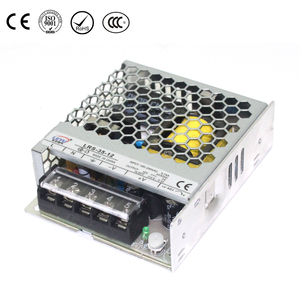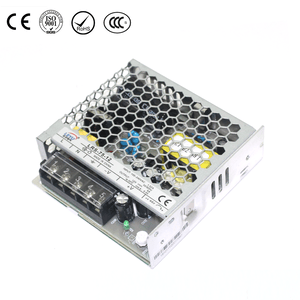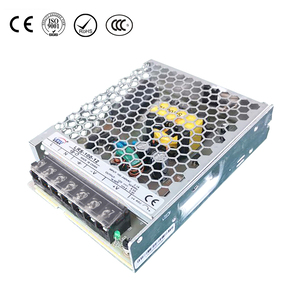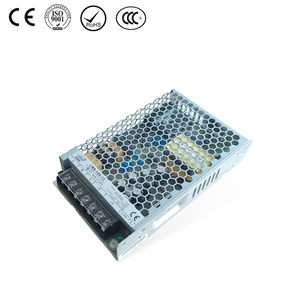Understanding Waterproof LED Driver Power Supply: Function, IP Ratings, and How It Works
Date:2025-11-07 03:21:04 Visit:47
Lighting systems today are becoming increasingly advanced, efficient, and durable — and at the heart of these systems lies the Waterproof LED driver power supply. Whether you’re installing LED lights for outdoor landscapes, architectural facades, or marine environments, understanding what a waterproof LED driver is and how it works is crucial for both performance and longevity.
In this article, we will explore in depth what a waterproof LED driver power supply is, how it functions, and what IP67/IP68 protection ratings actually mean. Finally, we will introduce Leyu, a trusted manufacturer specializing in AC/DC and DC/DC switching power supplies, including waterproof LED drivers that meet international quality standards.
What Is a Waterproof LED Driver Power Supply?
A waterproof LED driver power supply is a specialized electrical device that converts alternating current (AC) from the mains into a stable, regulated direct current (DC) that powers LED lighting systems. The “waterproof” aspect means that the driver is sealed and protected from moisture, dust, and environmental contaminants, making it suitable for outdoor or wet-area installations.
1. The Role of LED Drivers
LEDs (Light Emitting Diodes) are sensitive electronic components that require a constant and controlled flow of current to operate efficiently. If connected directly to a power source, even small voltage fluctuations could shorten their lifespan or cause them to fail completely.
This is where LED drivers come in — they act as a voltage and current regulator, ensuring that the LEDs receive the exact amount of power they need. Waterproof LED drivers perform the same role, but they are built to endure exposure to rain, humidity, and temperature extremes.
2. Applications of Waterproof LED Drivers
Waterproof LED drivers are used in a wide variety of lighting applications, such as:
Outdoor LED strip lights for architecture or signage
Garden and landscape lighting systems
Underwater pool lights or fountains
Street and pathway lighting
Marine and dock lighting installations
Industrial or factory lighting in humid conditions
Their robust protection makes them ideal for environments where conventional drivers would fail due to moisture or corrosion.
How Do Waterproof LED Power Supplies Work?
Understanding how a waterproof LED power supply functions helps users make informed decisions when choosing the right model for their application.
Essentially, the driver performs power conversion, regulation, and protection through several electronic stages.
1. Power Conversion
When AC voltage (usually 110V or 220V) enters the power supply, the driver converts it into DC voltage (such as 12V or 24V). This conversion process is achieved using high-frequency switching circuits, transformers, and rectifiers.
This conversion must be highly efficient, as any energy loss turns into heat. In high-quality waterproof drivers — such as those manufactured by Leyu — efficiency can exceed 90%, ensuring lower energy consumption and longer service life.
2. Constant Voltage or Constant Current Regulation
There are two primary types of LED drivers:
Constant Voltage (CV) drivers supply a steady voltage (e.g., 12V or 24V) and allow the current to vary depending on the load. These are commonly used in LED strips or signage.
Constant Current (CC) drivers maintain a fixed current (e.g., 350mA or 700mA), allowing voltage to fluctuate. These are typically used for single high-power LEDs or modules.
Waterproof LED power supplies can be either constant voltage or constant current, depending on the application’s needs.
3. Waterproof Protection and Encapsulation
The waterproofing of LED power supplies is achieved through encapsulation, also known as “potting.” In this process, the electronic components are embedded in a solid or gel-like compound that prevents moisture ingress.
This potting material (often epoxy or silicone-based) provides:
Excellent resistance to water and dust
Heat dissipation and vibration protection
Improved mechanical strength and insulation
Together with a sealed aluminum or plastic casing, this ensures the driver remains fully functional even in outdoor or underwater environments.
4. Protection Features
Modern waterproof LED drivers integrate multiple protection mechanisms to ensure safety and reliability:
Over-voltage protection (OVP)
Over-current protection (OCP)
Short-circuit protection (SCP)
Over-temperature protection (OTP)
These safeguards prevent damage caused by electrical surges, short circuits, or overheating — which are common in outdoor installations.
What Does IP67 / IP68 Mean for an LED Driver?
When choosing a waterproof LED driver, you will often see ratings like IP65, IP67, or IP68 printed on the label. These ratings are standardized according to IEC 60529, which classifies the degree of protection offered by enclosures against the intrusion of solid particles and water.
Let’s break down what IP67 and IP68 mean.
1. Understanding the IP Code
The IP (Ingress Protection) code consists of two digits:
The first digit indicates protection against solid objects (dust, debris, etc.)
The second digit indicates protection against liquids (water, condensation, immersion, etc.)
In this article, we will explore in depth what a waterproof LED driver power supply is, how it functions, and what IP67/IP68 protection ratings actually mean. Finally, we will introduce Leyu, a trusted manufacturer specializing in AC/DC and DC/DC switching power supplies, including waterproof LED drivers that meet international quality standards.
What Is a Waterproof LED Driver Power Supply?
A waterproof LED driver power supply is a specialized electrical device that converts alternating current (AC) from the mains into a stable, regulated direct current (DC) that powers LED lighting systems. The “waterproof” aspect means that the driver is sealed and protected from moisture, dust, and environmental contaminants, making it suitable for outdoor or wet-area installations.
1. The Role of LED Drivers
LEDs (Light Emitting Diodes) are sensitive electronic components that require a constant and controlled flow of current to operate efficiently. If connected directly to a power source, even small voltage fluctuations could shorten their lifespan or cause them to fail completely.
This is where LED drivers come in — they act as a voltage and current regulator, ensuring that the LEDs receive the exact amount of power they need. Waterproof LED drivers perform the same role, but they are built to endure exposure to rain, humidity, and temperature extremes.
2. Applications of Waterproof LED Drivers
Waterproof LED drivers are used in a wide variety of lighting applications, such as:
Outdoor LED strip lights for architecture or signage
Garden and landscape lighting systems
Underwater pool lights or fountains
Street and pathway lighting
Marine and dock lighting installations
Industrial or factory lighting in humid conditions
Their robust protection makes them ideal for environments where conventional drivers would fail due to moisture or corrosion.
How Do Waterproof LED Power Supplies Work?
Understanding how a waterproof LED power supply functions helps users make informed decisions when choosing the right model for their application.
Essentially, the driver performs power conversion, regulation, and protection through several electronic stages.
1. Power Conversion
When AC voltage (usually 110V or 220V) enters the power supply, the driver converts it into DC voltage (such as 12V or 24V). This conversion process is achieved using high-frequency switching circuits, transformers, and rectifiers.
This conversion must be highly efficient, as any energy loss turns into heat. In high-quality waterproof drivers — such as those manufactured by Leyu — efficiency can exceed 90%, ensuring lower energy consumption and longer service life.
2. Constant Voltage or Constant Current Regulation
There are two primary types of LED drivers:
Constant Voltage (CV) drivers supply a steady voltage (e.g., 12V or 24V) and allow the current to vary depending on the load. These are commonly used in LED strips or signage.
Constant Current (CC) drivers maintain a fixed current (e.g., 350mA or 700mA), allowing voltage to fluctuate. These are typically used for single high-power LEDs or modules.
Waterproof LED power supplies can be either constant voltage or constant current, depending on the application’s needs.
3. Waterproof Protection and Encapsulation
The waterproofing of LED power supplies is achieved through encapsulation, also known as “potting.” In this process, the electronic components are embedded in a solid or gel-like compound that prevents moisture ingress.
This potting material (often epoxy or silicone-based) provides:
Excellent resistance to water and dust
Heat dissipation and vibration protection
Improved mechanical strength and insulation
Together with a sealed aluminum or plastic casing, this ensures the driver remains fully functional even in outdoor or underwater environments.
4. Protection Features
Modern waterproof LED drivers integrate multiple protection mechanisms to ensure safety and reliability:
Over-voltage protection (OVP)
Over-current protection (OCP)
Short-circuit protection (SCP)
Over-temperature protection (OTP)
These safeguards prevent damage caused by electrical surges, short circuits, or overheating — which are common in outdoor installations.
What Does IP67 / IP68 Mean for an LED Driver?
When choosing a waterproof LED driver, you will often see ratings like IP65, IP67, or IP68 printed on the label. These ratings are standardized according to IEC 60529, which classifies the degree of protection offered by enclosures against the intrusion of solid particles and water.
Let’s break down what IP67 and IP68 mean.
1. Understanding the IP Code
The IP (Ingress Protection) code consists of two digits:
The first digit indicates protection against solid objects (dust, debris, etc.)
The second digit indicates protection against liquids (water, condensation, immersion, etc.)




-134213.jpg)



